The tranquil forests of Ohio, with their towering maples and sturdy oaks, may seem like peaceful sanctuaries where nature thrives undisturbed. But beneath the surface of this serene landscape lurks a threat so devastating that it could transform these lush woodlands into barren wastelands. An invasive species with an appetite for destruction has returned to American soil, and Ohio’s trees are directly in its crosshairs. This isn’t just another environmental concern buried in scientific journals—it’s an ecological emergency that could reshape the entire landscape of the Midwest.
The Beetle That Travels the World
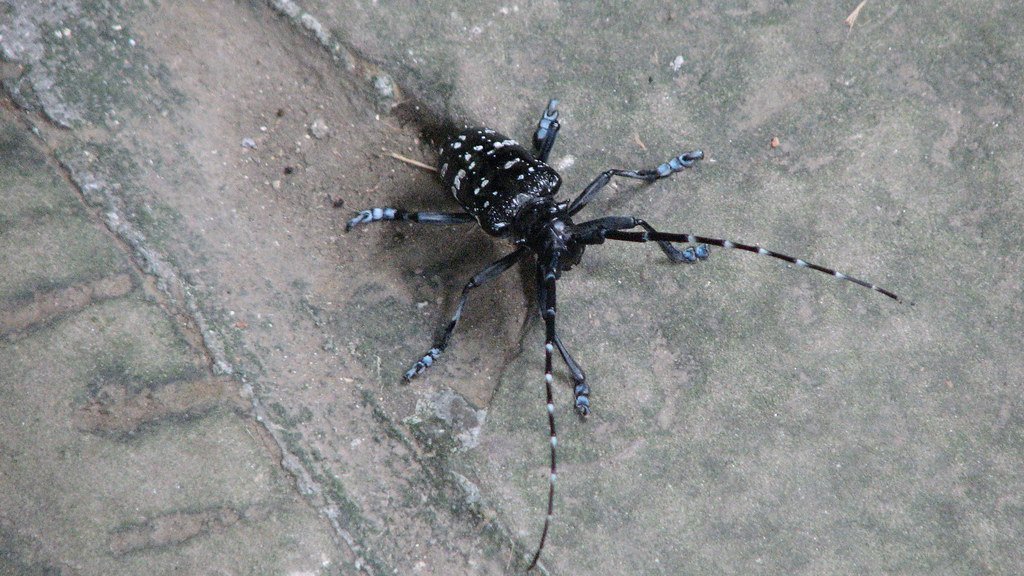
The Asian longhorned beetle didn’t book a flight to America—it hitchhiked. This glossy black insect, adorned with distinctive white spots and antennae longer than its body, originally called the forests of China and Korea home. During the 1990s, these beetles began showing up in wooden packing materials and cargo shipments heading to major American ports. Like unwelcome passengers on a global freight train, they traveled thousands of miles hidden inside wood that had never been properly treated. Once they arrived, they wasted no time making themselves at home in a continent that had no natural defenses against their destructive habits.
A Tiny Destroyer with a Big Appetite

Don’t let the Asian longhorned beetle’s modest size fool you—this inch-and-a-half-long insect packs the destructive power of a natural disaster. Female beetles bore perfectly round holes into tree bark, each about the size of a dime, where they deposit their eggs. The larvae that hatch from these eggs are the real troublemakers, spending up to two years tunneling through the tree’s interior like miniature bulldozers. They create a network of galleries and tunnels that cuts off the tree’s ability to transport water and nutrients, essentially starving it from the inside out. A single tree can host dozens of beetles, and once they’re established, the tree’s fate is sealed.
Ohio’s Forests Stand in the Crosshairs

Ohio’s diverse forest ecosystem makes it a particularly attractive target for these invasive beetles. The state’s abundance of maple, birch, elm, and willow trees creates what entomologists call a “beetle buffet”—an endless supply of preferred host trees. These species lack the natural chemical defenses that trees in the beetle’s native habitat have developed over millions of years of coevolution. Ohio’s climate also provides ideal conditions for beetle reproduction, with warm summers that accelerate their development and winters mild enough for many larvae to survive. The state’s extensive transportation networks and shipping corridors create multiple entry points for new infestations, making containment particularly challenging.
The Economic Nightmare Hiding in Plain Sight
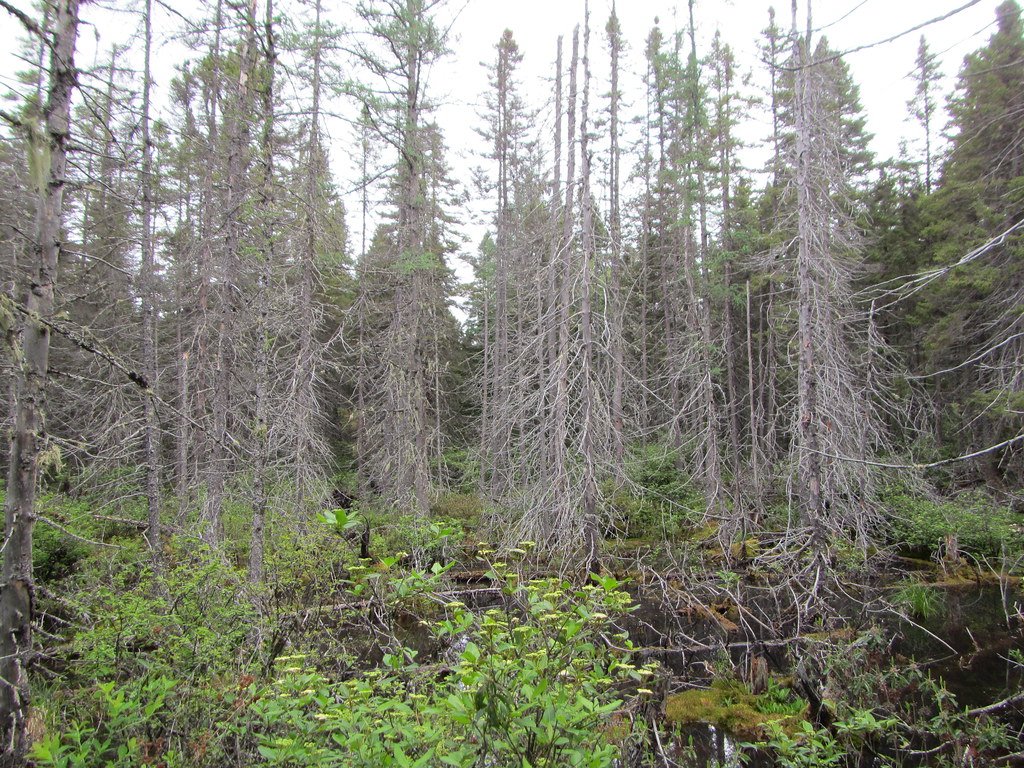
The financial impact of an Asian longhorned beetle outbreak extends far beyond the cost of removing dead trees. Ohio’s forest products industry, worth billions of dollars annually, faces potential devastation if these beetles establish widespread populations. Urban areas could see property values plummet as street trees die and landscaping costs skyrocket. The tourism industry, which relies heavily on Ohio’s natural beauty, could lose millions as scenic forests transform into graveyards of dead timber. Agricultural areas aren’t immune either, as windbreaks and shade trees that protect crops and livestock become casualty statistics in the beetle’s march across the landscape.
Early Warning Signs Every Ohioan Should Know
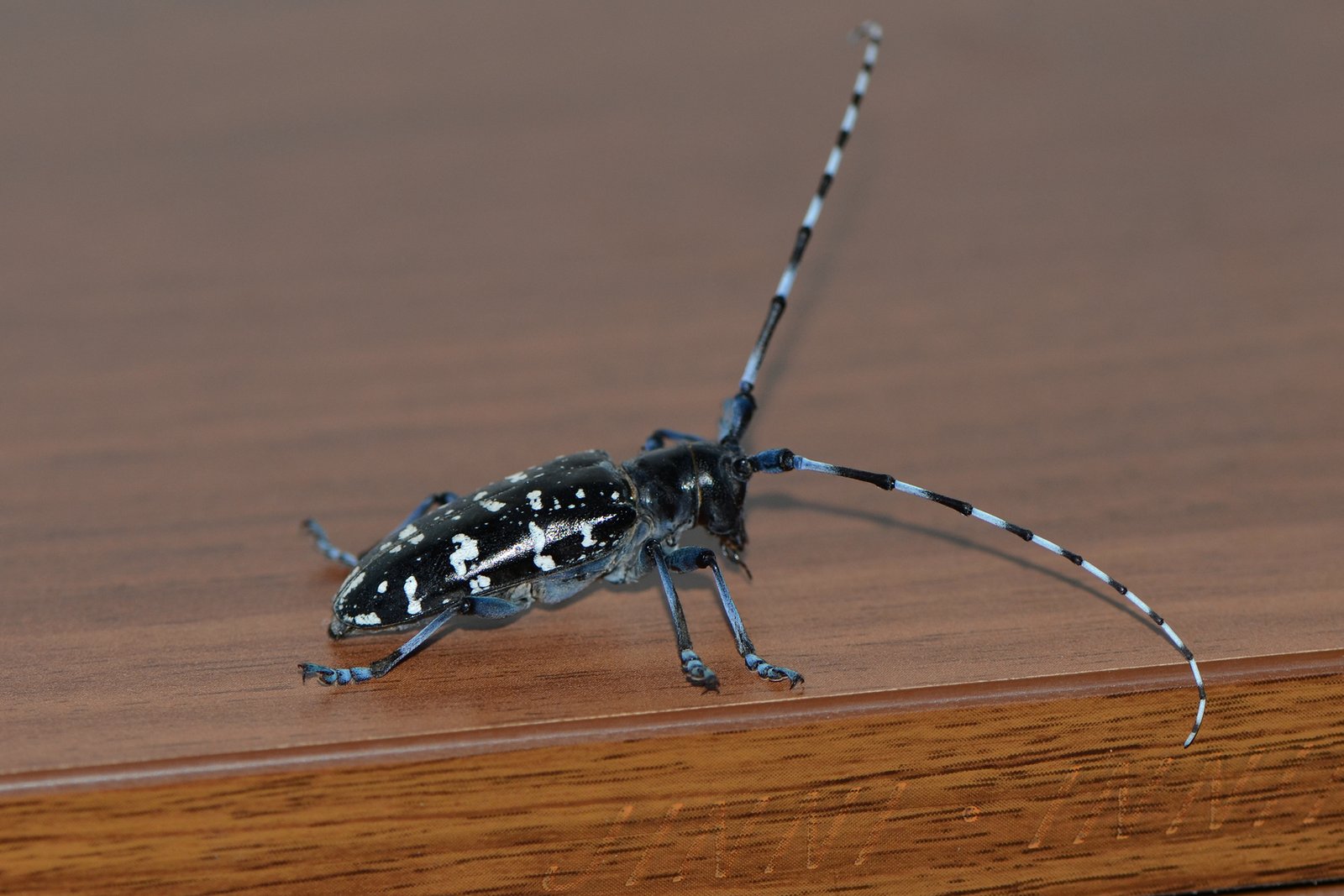
Spotting an Asian longhorned beetle infestation early can mean the difference between losing a few trees and losing entire forests. The most obvious sign is the presence of perfectly round exit holes in tree bark, typically found on the trunk and larger branches. Fresh wood shavings and sawdust around the base of trees indicate active boring activity, while yellowing leaves and dying branches signal internal damage. The beetles themselves are most visible during summer months, when adults emerge to mate and lay eggs. Their distinctive long antennae and white-spotted black bodies make them relatively easy to identify, though many people mistake them for harmless native beetles.
How These Beetles Turn Trees into Ghost Forests
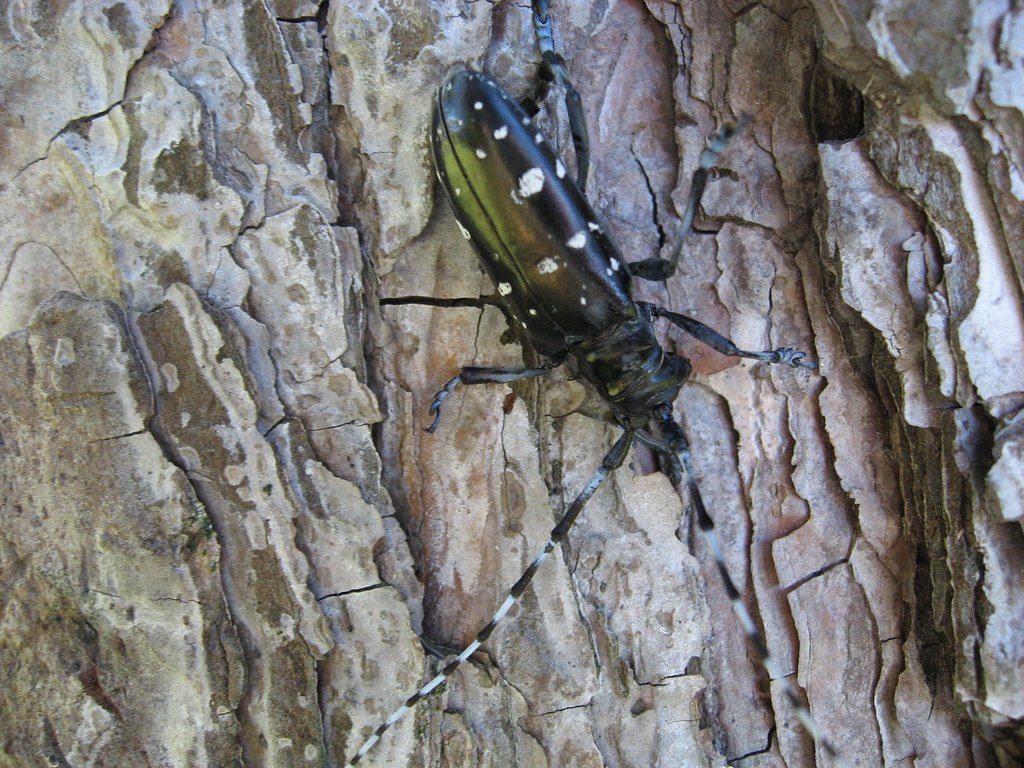
The Asian longhorned beetle’s method of killing trees is both systematic and ruthless. After females lay their eggs in bark crevices, the hatching larvae immediately begin their destructive journey into the tree’s heartwood. They create extensive tunnel systems that interrupt the flow of water and nutrients, essentially cutting the tree’s lifelines. The damage is often irreversible by the time external symptoms appear, as the beetles work from the inside out. Infected trees become walking dead—they may look healthy from a distance but are actually hollow shells waiting to collapse. This invisible destruction makes the beetles particularly dangerous, as infestations can spread undetected for years.
The Battle Against an Invisible Enemy

Fighting the Asian longhorned beetle requires a combination of cutting-edge technology and old-fashioned detective work. Agricultural inspectors use specialized equipment to detect beetle activity inside trees, including acoustic devices that can hear larvae chewing and X-ray machines that reveal tunnel networks. Pheromone traps help monitor adult beetle populations, while thermal imaging cameras can spot the heat signatures of active infestations. The most effective approach combines multiple detection methods, as no single technique can catch every infestation. Early detection efforts focus on high-risk areas like ports, warehouses, and transportation hubs where new introductions are most likely to occur.
Why Traditional Pesticides Fall Short
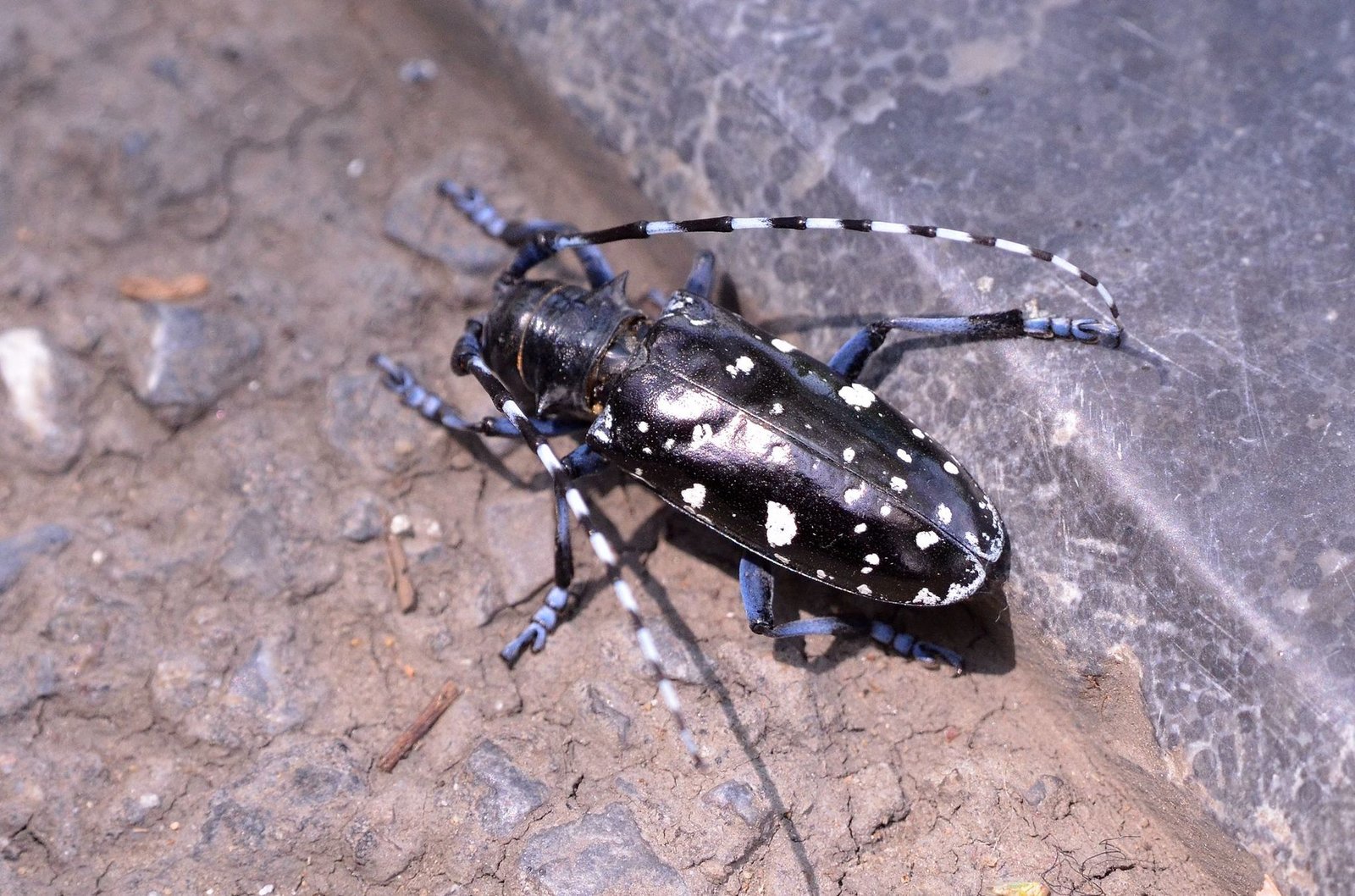
The Asian longhorned beetle’s lifecycle makes it particularly resistant to conventional pest control methods. Most pesticides target insects that feed on leaves or live on tree surfaces, but beetle larvae spend the majority of their development deep inside wood where chemicals can’t reach them. Even systemic insecticides that trees absorb through their roots often fail to achieve lethal concentrations in the heartwood where larvae tunnel. The beetles’ long development period, sometimes lasting two years, means that multiple treatment cycles are necessary to break their reproductive cycle. This resistance to chemical control is one reason why early detection and rapid response are so critical for successful management.
The Nuclear Option: When Trees Must Die to Save Forests

Sometimes the only way to save a forest is to destroy part of it. When Asian longhorned beetles are detected, the standard response involves cutting down and destroying all infested trees, plus any susceptible trees within a predetermined radius. This scorched-earth approach may seem extreme, but it’s often the only way to prevent the beetles from spreading to neighboring areas. The removed trees are typically chipped and burned or processed in specialized facilities that can kill any remaining larvae. While this method is highly effective at eliminating local populations, it comes with significant environmental and economic costs that make prevention far preferable to cure.
Success Stories: How Other States Won the War

Despite the challenges, several states have successfully eradicated Asian longhorned beetle populations through rapid response and sustained effort. New York eliminated a major infestation in Brooklyn and Queens through a combination of tree removal, quarantine measures, and intensive monitoring. Massachusetts achieved similar success in Worcester County, where coordinated efforts between federal, state, and local agencies led to complete eradication. These victories required years of sustained effort and millions of dollars in funding, but they demonstrate that the beetles can be defeated when detected early and addressed aggressively. The key factors in these success stories were rapid response, community cooperation, and adequate funding for long-term monitoring.
Climate Change: Adding Fuel to the Fire

Rising temperatures and changing weather patterns are creating more favorable conditions for Asian longhorned beetles across the Midwest. Warmer winters allow more larvae to survive, while extended growing seasons provide additional opportunities for reproduction and spread. Drought stress makes trees more vulnerable to beetle attack, as weakened trees have reduced ability to mount defensive responses. Climate change also affects the beetles’ natural enemies, potentially reducing the effectiveness of biological control agents. These changing conditions mean that areas previously considered low-risk for beetle establishment may become suitable habitat in the coming decades.
The Role of International Trade in Beetle Spread

Global commerce continues to provide new pathways for Asian longhorned beetle introductions, despite improved inspection protocols. Wooden packing materials, shipping pallets, and decorative wood products remain potential vehicles for beetle transport. The sheer volume of international trade makes it impossible to inspect every shipment thoroughly, creating opportunities for undetected introductions. New trade agreements and shipping routes can create unexpected pathways for beetle spread, requiring constant vigilance and adaptation of inspection procedures. The challenge is compounded by the fact that beetles can remain dormant in wood for extended periods, emerging long after the initial shipment arrives.
Technology’s Role in the Fight

Modern technology is revolutionizing how scientists detect and track Asian longhorned beetle populations. Satellite imagery can identify stressed trees across large landscapes, helping narrow down areas for ground-level inspection. DNA analysis allows rapid identification of beetle species and can trace the geographic origins of new introductions. Mobile apps enable citizens to report suspected beetle sightings and upload photos for expert verification. Artificial intelligence systems can analyze thousands of trap images to identify adult beetles automatically. These technological advances are making detection faster and more accurate, but they require significant investment and training to implement effectively.
Community Action: Every Citizen is a Sentinel

The fight against Asian longhorned beetles can’t be won by government agencies alone—it requires active participation from everyone who cares about Ohio’s trees. Homeowners, landscapers, and outdoor enthusiasts serve as the first line of defense by reporting suspicious beetle activity or tree damage. Community education programs help people identify the signs of infestation and understand the importance of rapid reporting. Local volunteer groups can assist with monitoring efforts and help spread awareness about the threat. Social media and neighborhood networks can amplify detection efforts by sharing information about suspected sightings. The more eyes watching Ohio’s trees, the better the chances of catching new infestations before they become established.
Research: Unlocking the Beetle’s Secrets

Scientists are working around the clock to develop new weapons in the war against Asian longhorned beetles. Research into the beetles’ pheromones could lead to improved trap designs and mating disruption techniques. Studies of their natural enemies in Asia might identify biological control agents that could be safely introduced to North America. Genetic research is revealing vulnerabilities in the beetle’s biology that could be exploited for control purposes. Understanding how climate change affects beetle development could help predict future risk areas and improve management strategies. This ongoing research provides hope for more effective and environmentally friendly control methods in the future.
The Ripple Effect: How Beetle Damage Spreads

The impact of Asian longhorned beetles extends far beyond the trees they directly attack. Dead and dying trees create fire hazards that threaten entire communities, while falling branches and trunks pose safety risks to people and property. The loss of tree cover affects local climate conditions, reducing shade and increasing urban heat island effects. Wildlife populations suffer as nesting sites and food sources disappear along with the trees. Soil erosion increases without tree roots to hold the earth in place, potentially affecting water quality in nearby streams and rivers. These cascading effects demonstrate why preventing beetle establishment is far more cost-effective than dealing with the consequences of widespread tree mortality.
Hope on the Horizon: New Control Methods
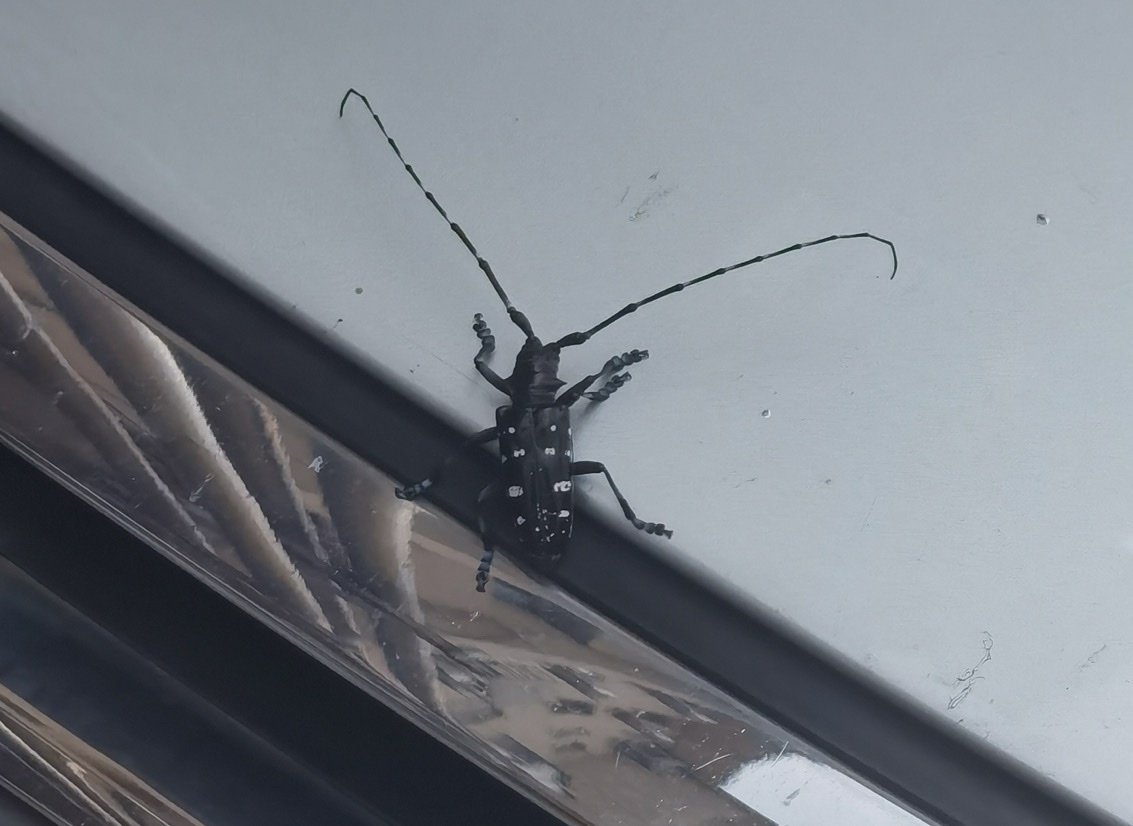
Despite the challenges, innovative approaches are offering new hope in the battle against Asian longhorned beetles. Scientists are developing genetically modified trees with enhanced resistance to beetle attack, potentially creating living barriers to beetle spread. New biotechnology tools could allow for the release of sterile male beetles that would reduce reproduction rates in wild populations. Advanced pheromone research is leading to more effective traps and monitoring systems. Precision forestry techniques can help identify the most vulnerable trees and focus protection efforts where they’re needed most. While these approaches are still in development, they represent the next generation of tools that could tip the balance in favor of Ohio’s forests.
What You Can Do to Protect Ohio’s Trees

Every Ohioan has a role to play in protecting the state’s forests from Asian longhorned beetle invasion. The most important action is learning to identify the signs of beetle activity and reporting suspicious findings to agricultural authorities immediately. Avoid moving firewood or other wood materials from infested areas, as this is a primary way beetles spread to new locations. Support funding for detection and eradication programs through local and state government channels. Choose native tree species for landscaping projects, as they’re often more resistant to invasive pests. Stay informed about the latest developments in beetle management and share that knowledge with friends and neighbors. The collective vigilance of Ohio’s citizens represents the state’s best defense against these destructive invaders.
The Asian longhorned beetle’s return to American soil represents more than just another environmental challenge—it’s a test of our ability to protect the natural heritage that defines places like Ohio. The stakes couldn’t be higher, with entire forest ecosystems hanging in the balance. Success requires unprecedented cooperation between scientists, government agencies, and ordinary citizens who refuse to let these invasive destroyers claim victory. The battle lines are drawn, the enemy is identified, and the tools for victory are within reach. What happens next depends on how seriously we take this threat and how quickly we act to address it. Will Ohio’s majestic forests survive this invasion, or will future generations inherit a landscape scarred by our failure to act?




